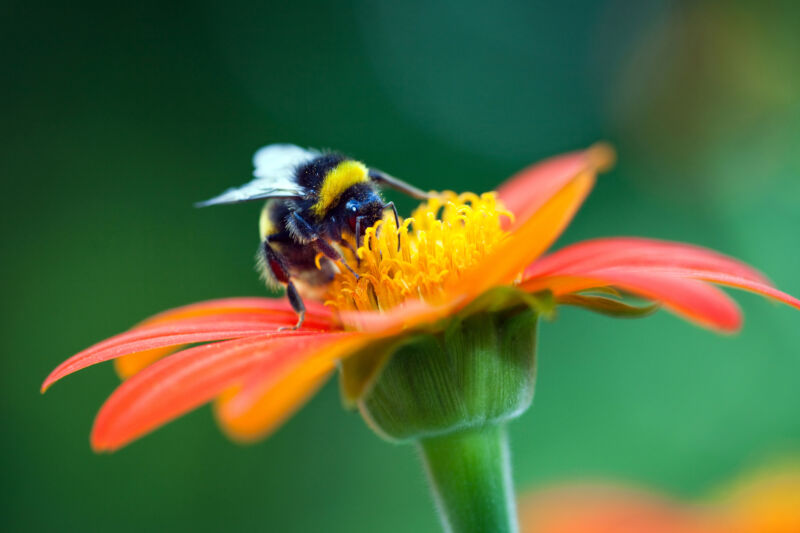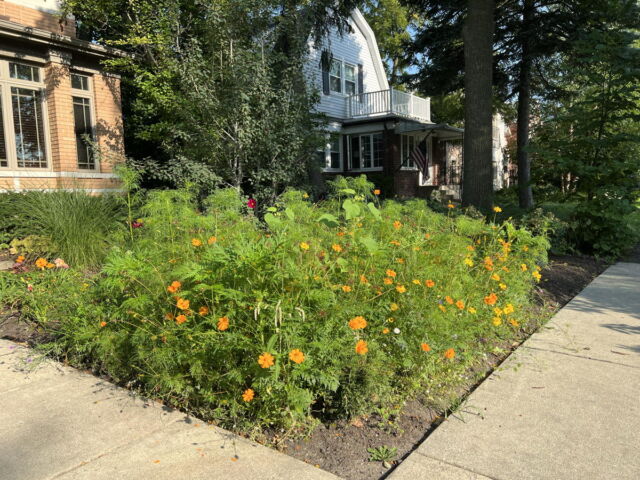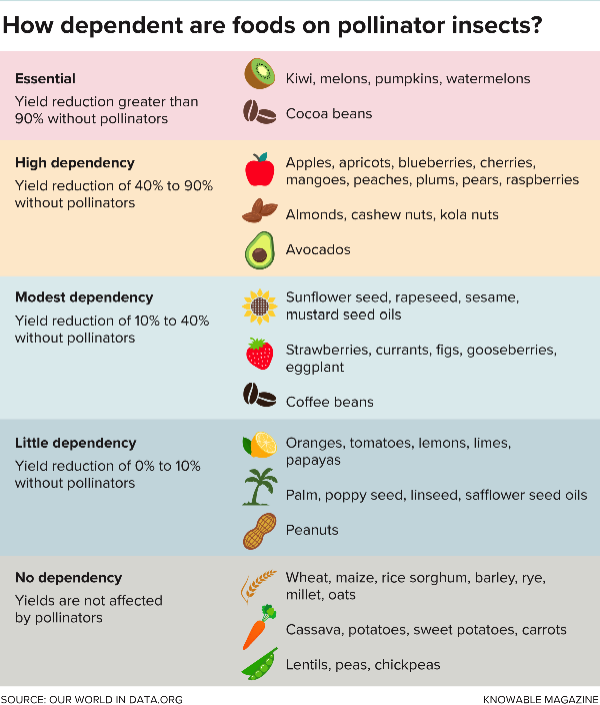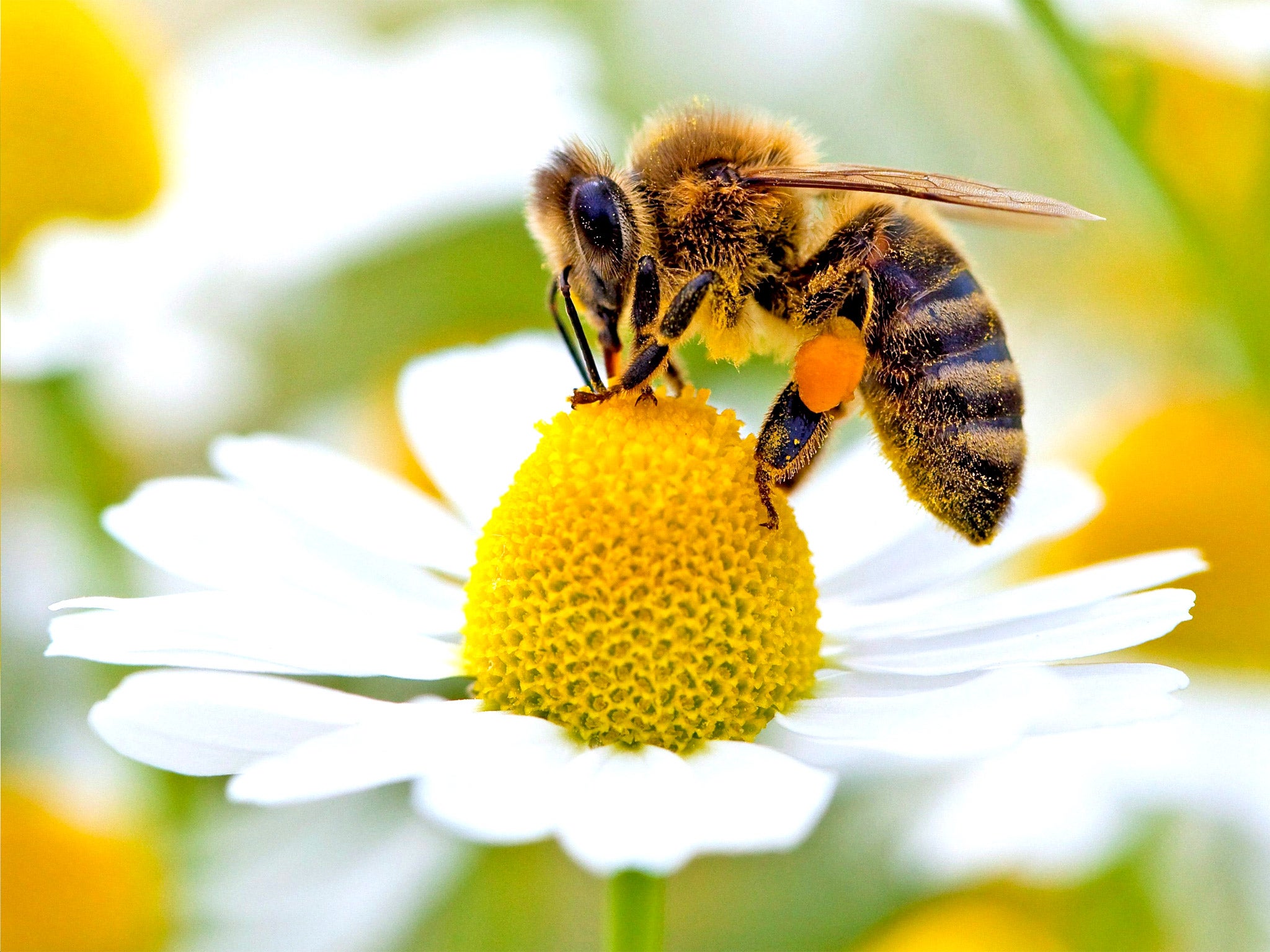
When ecologist Rachael Winfree first began studying bees 25 years ago, she happened upon a surprise: a species of plasterer bee in the New Jersey Pine Barrens, not seen in 50 years and suspected to have gone extinct. But when she called state wildlife officials to report the discovery, she was told they weren’t interested—they didn’t have the resources to monitor bees and other insects.
This is a familiar scenario to scientists who study native bees. These insects are facing multiple threats, and though official monitoring has improved, their declines have not been well documented. At the same time, a growing body of research is revealing just how crucial native bees are as pollinators for many plants. “They both pollinate our natural systems and—what people don’t realize—they are also really important for many of our agricultural crops,” says Scott Black, executive director of the Xerces Society, a nonprofit focused on invertebrate conservation.
Domestic honeybees are pretty much synonymous with pollination in the public’s mind, particularly when it comes to crops, and the plight of wild bees has largely been overshadowed by concern about threats to the domestic variety. Many people don’t know the difference between wild and domestic bees, further obscuring both the troubles faced by many wild species and their value, says Hollis Woodard, an entomologist at the University of California, Riverside.
While individual domestic honeybee colonies are vulnerable to collapse due to a combination of poor nutrition, pesticides, and pathogens, the insects are not at risk of dying out. “We manage honeybees all across the world,” Black says. “There are more honeybees on the planet now, we think, than ever in the past.”
For some wild bees, however, the threats may be existential. And this isn’t bad news just for the bees. Researchers argue that relying solely on honeybees for pollination is a risky strategy akin to a poor retirement strategy of buying stocks in only one company. And studies have shown that native bees are in many cases essential to flourishing ecosystems and farms, even where honeybees are abundant.
Growing awareness of the issue is prompting both scientists and policymakers to pay greater attention to declines among these indispensable insects. And new findings point to how farmers and land managers can better support a diverse and booming bee community.

Benefits of bees
Unlike hive-forming honeybees, most wild species are solitary (bumblebees, which form colonies, are one well-known exception), nesting in cavities in rocks and wood or on the ground in leaves and woody debris. There are about 20,000 wild bee species globally and 3,600 in the United States and Canada.
More than 80 percent of flowering plants depend on insect pollinators to reproduce. When pollinators visit flowers—which act as the plants’ reproductive organs—to eat their nutritious pollen and nectar, the insects inadvertently transport the pollen between plants, which fertilizes the blooms, leading to fruit and seed formation. “If you want resilient meadows in colourado’s mountains, if you want beautiful tall grass prairie in the east, or flowering ecosystems in California, you can thank a native bee,” Black says.
In agricultural fields around the world, native bees help to pollinate the three-quarters of crop species that rely on pollinators, which amounts to one-third of global crop production by volume. (Many staples like wheat and corn are wind-pollinated.) In a 2013 study covering 27 types of crops—such as almonds, coffee, and blueberries—across 600 fields around the world, researchers found that wild insects increased the rate at which flowers turn to fruit. Fields with fewer wild pollinators had less fruit, leading the authors to conclude that honeybee pollination alone may not be able to sustain maximum yields on farms.

Recent work has also highlighted the huge economic impact of wild bees. Research published in 2020 found that for seven crops, including apples and pumpkins, wild bees were responsible for over $1.5 billion in annual production. Wild and managed bees have similar contributions to the value of produce sold, according to a 2015 analysis of 20 crops across almost 1,400 fields.
For some crops, wild bees are more effective pollinators than honeybees. For example, in tomatoes, blueberries, and cranberries, bumblebees are paramount. These crops’ flowers need to be shaken with a precise frequency to release pollen. “That frequency is provided by the bees’ buzz,” says entomologist Sydney Cameron of the University of Illinois Urbana-Champaign, coauthor of a 2020 overview of trends in bumblebee health in the Annual Review of Entomology. The fuzzy insects land on flowers and isolate their flight muscles from their wings, allowing the muscles to vibrate their thorax as their wings stay still, making them by far the most effective pollinators for these plants.
Even uncommon pollinators can play a surprisingly critical role. In a 2022 study of 72 wildflower and agricultural sites in New Jersey and Pennsylvania, rare and declining bee species provided up to 86 percent of pollination at some locations. Rare pollinators serve as insurance, filling in when common species are absent, says Winfree, now a pollination ecologist at Rutgers University and coauthor of the research. “In some places or some times, you may not have that dominant bumblebee or that honeybee,” Winfree says. “You may need these other species.” For example, when high winds in California almond orchards drove honeybees to stay in their hives, wild bees continued to visit the trees.
But all of the benefits provided by native bees may be at risk, says Claire Kremen, a conservation biologist at the University of British Columbia. In an assessment of nearly half of all bumblebee species, scientists estimated that a third of those studied were in decline. The number of bee species documented in a yearly survey from 2006 to 2015 had dropped by a fourth compared to similar tallies before 1990. Some crops—including apples, blueberries, and cherries in the US—are already being affected by the declines, producing less fruit than they would be expected to with more pollinators.



3175x175(CURRENT).thumb.jpg.b05acc060982b36f5891ba728e6d953c.jpg)

Recommended Comments
There are no comments to display.
Join the conversation
You can post now and register later. If you have an account, sign in now to post with your account.
Note: Your post will require moderator approval before it will be visible.